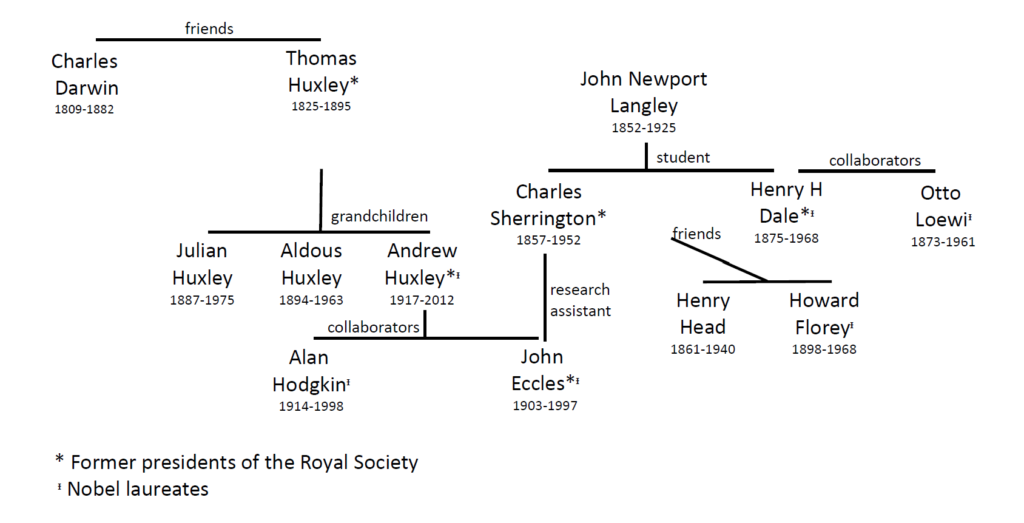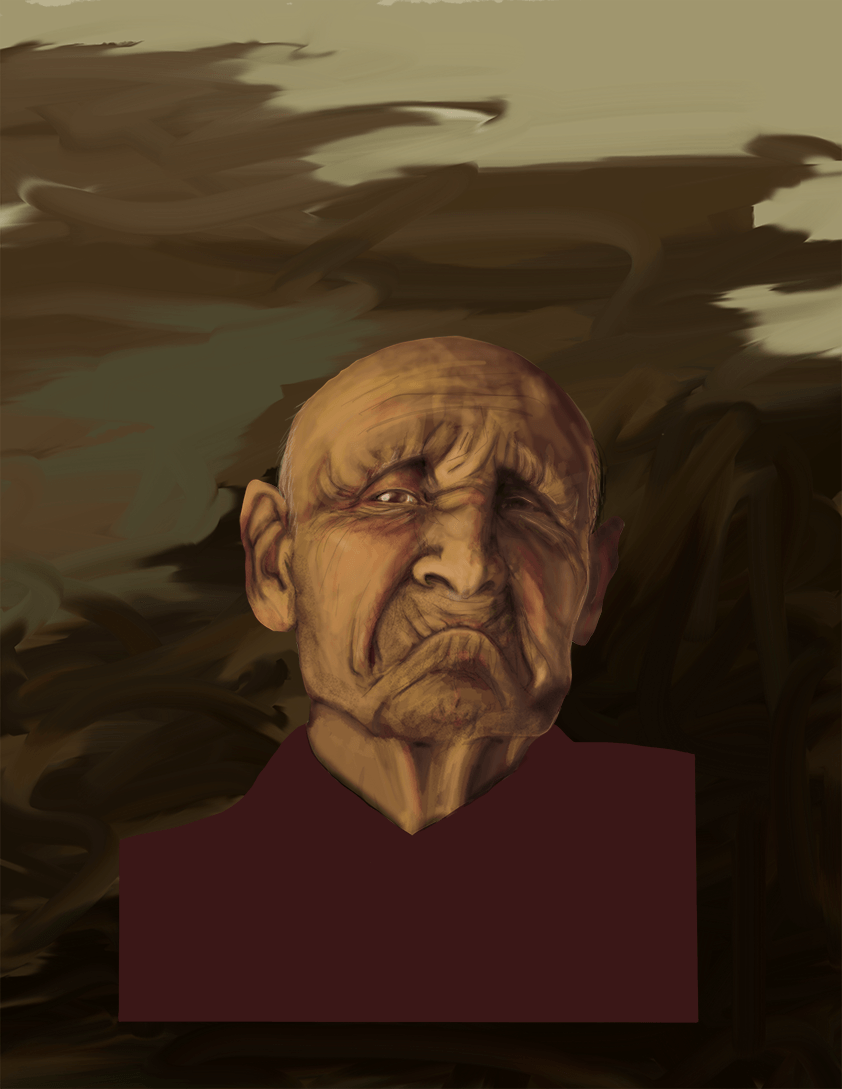When I read about researchers from a century ago, it seems like they all knew each other: Ivan Pavlov (Russian physiologist who described classically conditioning a bell to dog food, published in 1897) attended a university where Dmitri Mendeleev (Russian chemist who published the first familiar periodic table in 1869). Charles Darwin was still alive and his theory of evolution was just becoming noticed (published 1859). Sure, these are coincidences in time, but many of the famous scientists (and writers!) likely interacted at some point. Consider that Herbert George Wells (writer of War of the Worlds, (1989) and the “father of science fiction”) and Julian Huxley (a biologist and the first director of UNESCO) wrote The Science of Life (a book communicating the major scientific findings of that era) together in 1929. Huxley is a well recognized name in neuroscience because Julian Huxley’s stepbrother, Andrew Huxley, is the Nobel laureate who first described how neurons “fire” along with Alan Hodgkin and John Eccles. Julian had another stepbrother, Aldous Huxley, who wrote Brave New World, which came out in 1932. The three Huxley brothers’ grandfather was Thomas Henry Huxley, a comparative biologist and friend of Charles Darwin. (What a family!)
And then Henry Head (English neurologist who studied sensory systems, often using his own body) was a friend and collaborator of Charles Sherrington (an English neurophysiologist who studied neural circuits and coined the term, “synapse”). Sherrington was friends with Howard Florey (an Australian pharmacologist who shared a Nobel Prize for the discovery of penicillin) while John Eccles was his research assistant. John Eccles,as mentioned, worked with Andrew Huxley. Sherrington’s mentor while a graduate student was John Newport Langley (a British physiologist who first noticed the three divisions of the autonomic nervous system). Langley also mentored Henry Halette Dale (who studied acetylcholine and received the Nobel Prize with Otto Loewi, who conducted the famous frog heart experiment).

Of course, even if the men weren’t friends or collaborators, there were indirect interactions, like HG Wells praising Ivan Pavlov in an article. (This article is said to have influenced BF Skinner to focus more on social sciences rather than literature. Skinner went on to describe operant conditioning.) Not surprisingly, many of these men were presidents of the Royal Society (a prestigious science institution that have included Issac Newton and Lord Kelvin as presidents). While being friends with prominent researchers isn’t the key to success, science isn’t a lone venture. (Apprentice to Genius by Robert Kanigel actually expands on mentoring by prominent scientists whose students also went on to become giants in the field.)

No Responses